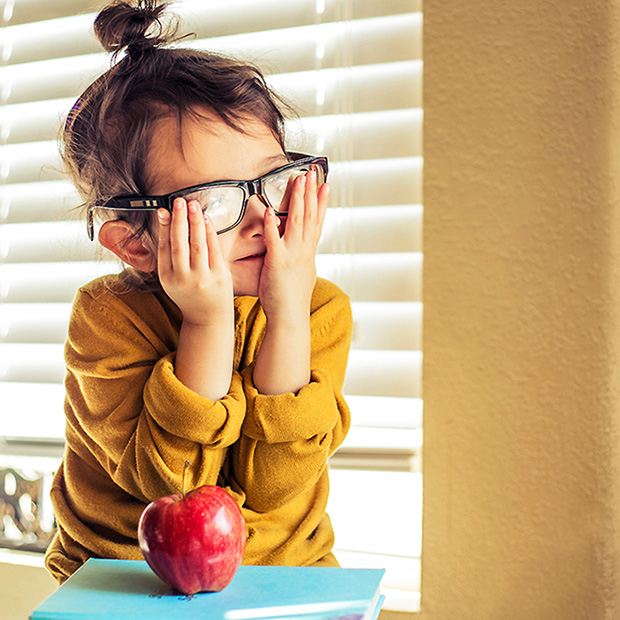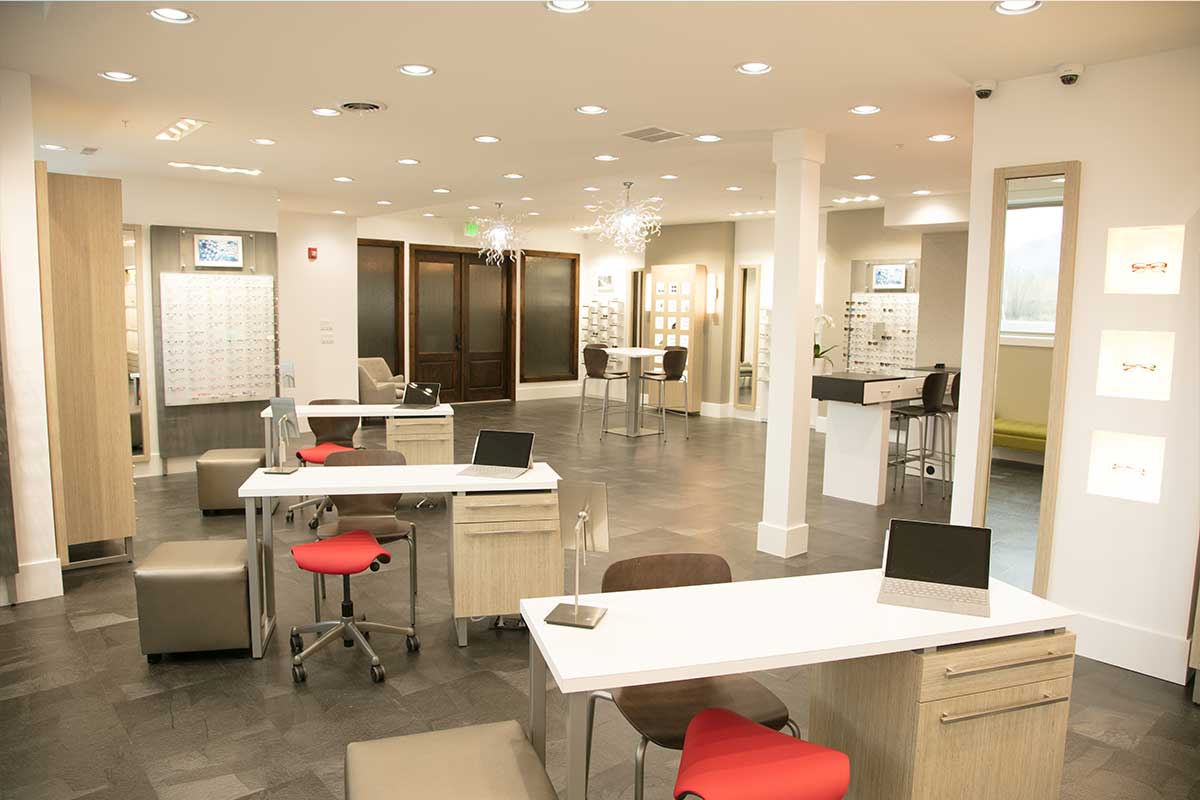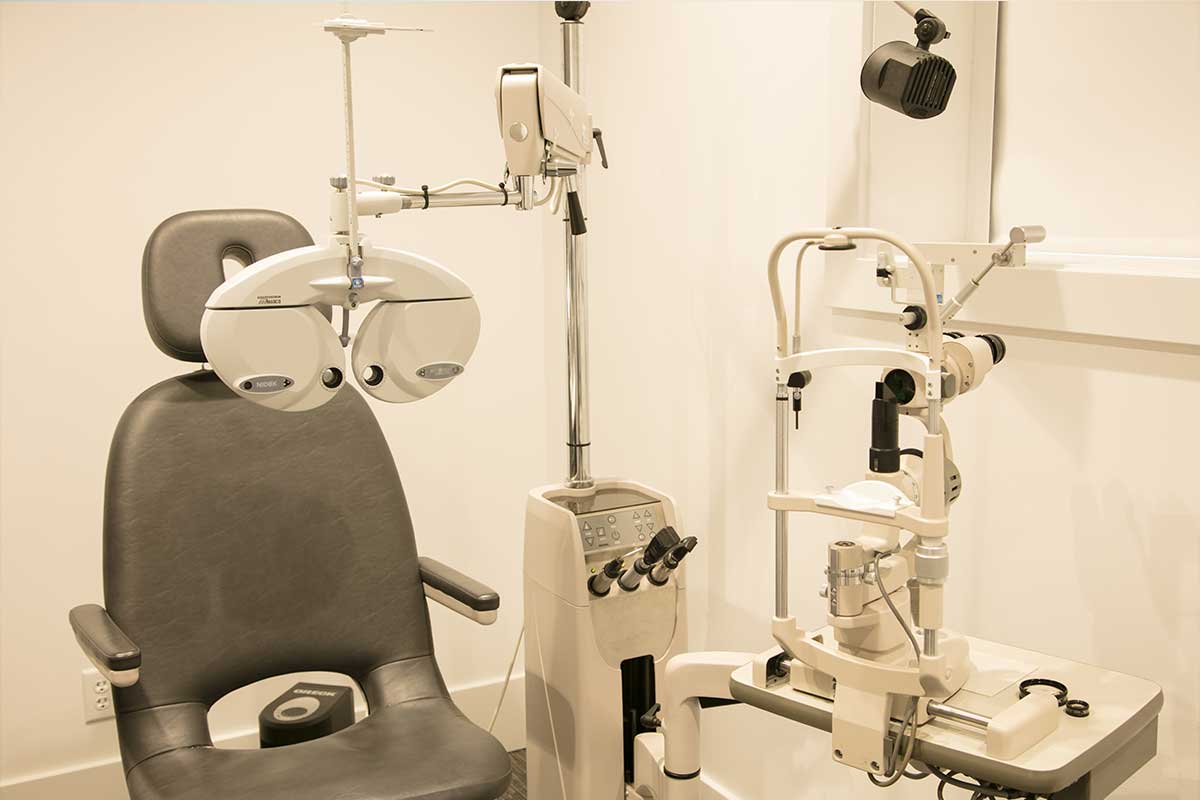Don’t Forget Your Child’s Back-To-School Eye Exam

An eye exam may be the last thing on your mind in the rush to get your children ready to go back to school.
But in reality, no amount of new clothes, binders, backpacks or pencils will help your child succeed in school if they have an undetected problem with their vision.
Why Back-To-School Eye Exams Matter
Did you know that one out of four children has vision problems? And yet only 50 percent of parents with children under the age of 12 have taken their children to an eye care professional.
Many children struggle needlessly with vision problems simply because they don’t know they have one. For a child in school, vision correction can make all the difference in their academic performance as well as their ability to play sports and interact with others. Eye exams ensure that children are seeing and feeling their best.
The Difference Between Eye Exams And Vision Screenings
You may be wondering why eye care professionals recommend a back-to-school eye exam when many children receive a vision screening at school. There are, however, important differences between a screening and a comprehensive eye exam. Where a screening tests only for visual acuity, comprehensive exams will test for visual acuity, chronic diseases, color vision and make sure the eyes are working together properly.
A standard school vision screening mostly checks distance vision but does not check for near vision issues, meaning farsightedness is often missed. Amblyopia, or lazy eye, and eye coordination issues are also frequently missed during screenings. That means that a child may pass a vision screening because they are able to see the board, but they may not even be able to see the textbook in front of them!
[iframe https://www.youtube.com/embed/qRu4TsYuVdM?rel=0 620 349]
Children’s bodies are rapidly growing and changing. Their eyes are as well. Regular eye exams will ensure early detection and treatment of any problems!
Set Your Child Up For Success
80 percent of learning at school is visual. Make your child’s eyesight a priority this school year and come in to see us. We want what’s best for you and your family, and that means ensuring lifelong vision health!
We’re committed to you–our amazing patients!
Top image by Flickr user Monica H. used under Creative Commons Attribution-Sharealike 4.0 license. Image cropped and modified from original.
The content on this blog is not intended to be a substitute for professional medical advice, diagnosis, or treatment. Always seek the advice of qualified health providers with questions you may have regarding medical conditions.
Don’t Forget Your Child’s Back-To-School Eye Exam

An eye exam may be the last thing on your mind in the rush to get your children ready to go back to school.
But in reality, no amount of new clothes, binders, backpacks or pencils will help your child succeed in school if they have an undetected problem with their vision.
Why Back-To-School Eye Exams Matter
Did you know that one out of four children has vision problems? And yet only 50 percent of parents with children under the age of 12 have taken their children to an eye care professional.
Many children struggle needlessly with vision problems simply because they don’t know they have one. For a child in school, vision correction can make all the difference in their academic performance as well as their ability to play sports and interact with others. Eye exams ensure that children are seeing and feeling their best.
The Difference Between Eye Exams And Vision Screenings
You may be wondering why eye care professionals recommend a back-to-school eye exam when many children receive a vision screening at school. There are, however, important differences between a screening and a comprehensive eye exam. Where a screening tests only for visual acuity, comprehensive exams will test for visual acuity, chronic diseases, color vision and make sure the eyes are working together properly.
A standard school vision screening mostly checks distance vision but does not check for near vision issues, meaning farsightedness is often missed. Amblyopia, or lazy eye, and eye coordination issues are also frequently missed during screenings. That means that a child may pass a vision screening because they are able to see the board, but they may not even be able to see the textbook in front of them!
[iframe https://www.youtube.com/embed/qRu4TsYuVdM?rel=0 620 349]
Children’s bodies are rapidly growing and changing. Their eyes are as well. Regular eye exams will ensure early detection and treatment of any problems!
Set Your Child Up For Success
80 percent of learning at school is visual. Make your child’s eyesight a priority this school year and come in to see us. We want what’s best for you and your family, and that means ensuring lifelong vision health!





